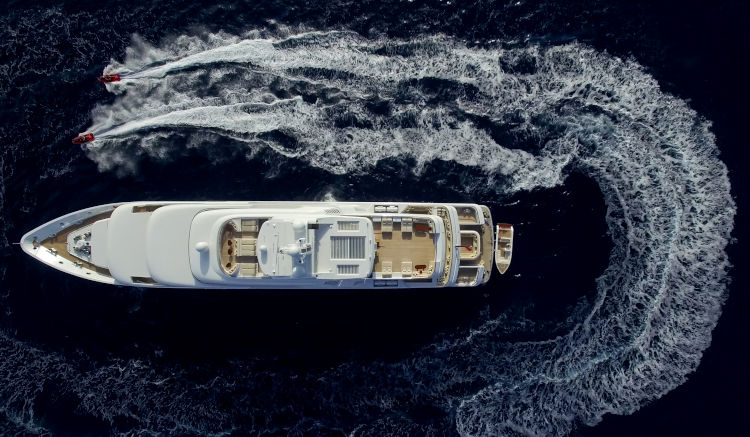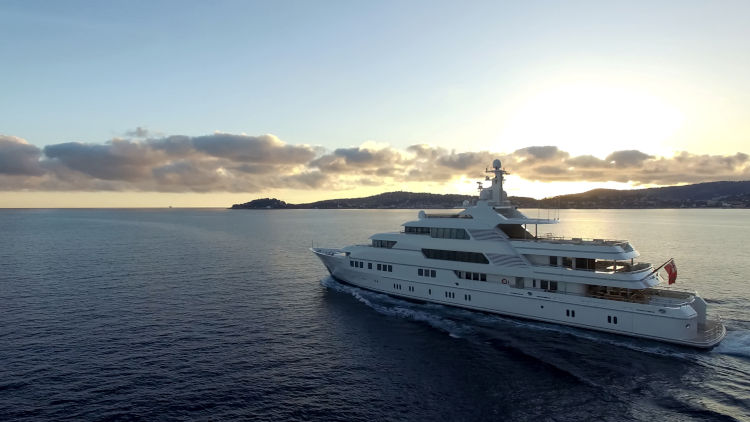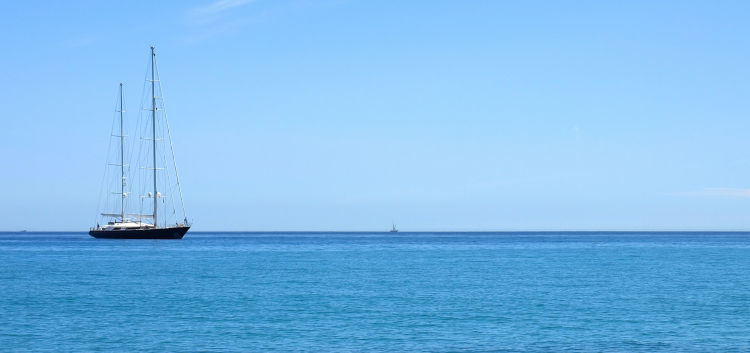The popularity of yacht chartering – both unanticipated, yet understandable -- seems to be the product of a perfect storm of nature and culture. Prior to the Pandemic, the cultural concept of luxury was already evolving from purchase of often superfluous commodities to the acquisition of positive memorable experiences. And then came nature: Covid-19, and all of its variants. The consequence of this storm was very little travel, with few options other than staying at home for two plus years. But late in 2021 yacht travel began again with an intensity even brokers were surprised at – distilled from the needs and wants from those that had been travel-suppressed for about two years.
Now, travelers seek luxury yacht vacation options that ensure a fresh type of exclusivity, security, and peace of mind brought about by a consistently hygienic, safe, elite environment – a sea sanctuary of safety and fun. These reasons, and others, have allowed an emerging, and not unexpected, popularity of private yacht and superyacht charter. This guide will answer questions regarding the decision-making process in chartering, so those who go to the sea do so with greater security and ease.
Yacht Chartering Defined
Yacht chartering is the practice of renting, or chartering a motor or sailing yacht and traveling to various coastal or island destinations. One can rent the whole vessel, for a certain amount of time, often a week to ten days, and generally with a crew, an executive chef and various deck staff.
Popular Destinations for Yacht Charters
The most popular destinations depend on time of year. It has been said there are two main seasons in yachting: summer and winter. Summer runs from May to October, with highest rates in July and August. The most popular destination is the Mediterranean. The French Riviera, Balearic Islands, Corsica, and Sardinia, the Greek Isles and Croatia are the favorites. In Winter, the season from December to April, the Caribbean, especially the Bahamas, are most popular.
And yet there is another season: shoulder season, the three-month window between late September and mid-November, is a meaningful option also: more yachts to choose from, few people, less expensive in general.
Types and Sizes of Yacht Charters
There are two types of yacht: sailing yachts and motor-powered yachts. Motor yachts are synonymous with speed and power and are often what first comes to mind for many when imagining a superyacht. With larger volume than a sailing yacht, there is typically more storage room for tenders and water toys. In contrast, a sailing yacht appeals to the romantic notion of traditional yachtsmanship – salt on the face, the sound of the sails in the wind, a less hurried environment, balanced with and by the sea.
Yacht Dimensions
- Mega-yachts and super yachts measure as long as 300 feet (and sometimes larger).
- Large yachts that measure 165 to 200 feet.
- Mid-size yachts that measure 115 to 165 feet.
- Smaller yachts that measure less than 115 feet.
Yacht Size and Guest Accommodation
Luxury yacht size varies from 80 feet to 300-plus feet and larger. Charter yachts usually carry up to 12 guests maximum. If more than 12, even if it is used as a private yacht, it is considered to be a passenger ship and has to comply with the SOLAS (Safety of Life at Sea) convention guidelines set out by the IMO, the International Maritime Organization.

The Yacht Experience
One would think that the goal of the yacht experience is to escape the land-based life for awhile, and to feel all that an ocean experience can provide, but within that ideal are experiences as diverse as the charterers themselves.
There are FAMILY CHARTERS - Most with many types of water toys, ranging from kayaks, paddle boards and underwater Seabobs to high-powered yacht tenders, boats, jet skis, and, yes, personal submarines.
In addition, WELLNESS/HEALTH CHARTERS have become popular, as chartering often includes having a personal chef to cater to dietary requests. Yacht chefs create healthy menus around any detox or diet desired – from Keto to non-dairy to vegetarian or vegan. In addition, the latest must-haves in crew credentials for wellness charters are yoga, pilates, fitness and massage certifications for some of the crew.
Wellness charters may include golfing in the Caribbean, heli-skiing in Patagonia or kite-surfing off the Dominican Republic. Also, charterers may include favorite personal trainers or pilates instructors from home as their guests.
Also, there are ADVENTURE CHARTERS. Those interested in watersports of any kind, an adventure yacht charter can sail to the best areas to explore. Avid divers enjoy yacht charters in Raja Ampat, Indonesia , in Australia, and in Fiji. Many charter superyachts have scuba equipment and their own dive masters who can plan the ideal dive itinerary and certify new divers as well.
Finally there are CORPORATE Charters. In the burgeoning entertainment market, yacht charters have risen to the fore as memorable locations for corporate meetings, and team building. A yacht environment combines opulence and opportunity, and the superyachts available for corporate charter have been honed to suit elegant evening events or week-long cruises.

Costs & Pricing
Luxury yacht charters can range from $30,000 per week to over $1 million per week, plus expenses. Generally, prices advertised on yacht charter websites are the base charter cost. This includes the yacht itself, crew service, equipment, and required insurance.
But the yacht charterer should expect to pay an additional 25-50% of the base charter cost for typical yacht expenses: provisions, food, drinks, fuel, local taxes and/or value-added tax (VAT), berthing dues, docking and marina fees, delivery or return fees, and any incidental costs the crew incurs on the guest’s behalf. In addition, VATs vary in price in certain locations. VAT is 20% in France and Monaco, 21% in Spain, 22% in Italy, but only 13% in Croatia, and there is no VAT in Montenegro.
Provisioning the yacht means the crew will purchase everything and anything charterers could want onboard per their specifications. They will pre-pay 20-30% of the base-charter rate, called the Advance Provisioning Allowance (APA). Finally, 50% of the base charter cost is due upon signing the contract. The balance, along with the APA, and VAT are usually paid a month before the charterer begins their vacation.
How Far in Advance to Book
If booking a popular destination during the high season, like the Caribbean during winter, the Mediterranean in the summer, or a festive period anywhere, it is best to book the yacht six months to a year in advance.

Two Other Types of Charter Contracts: All-Inclusive and Bare Boat
All-Inclusive Charters
An all-inclusive charter yacht includes accommodation for all guests, food and drink, water sport activities, and fuel costs – dockage fees and taxes are charged separately. The average weekly charter cost of a 100-foot sailing yacht is between $50,000-$100,000, and a week-long 100- foot motor yacht is anywhere between $50,000-90,000. But, the more remote an area one wishes to sail to, the more expensive it will be to charter a yacht there. The majority of all-inclusive yacht charters operate in just a few charter destinations in the world.
- What the all-inclusive contract includes: the sailing yacht, at minimum, includes a Captain and one additional crew member, the Chef who prepares all the meals, provides personal cabin service, and helps arrange activities. The all-inclusive charter price will include food, drink, and most likely a standard "ship's bar".
- What the all-inclusive contract does NOT include are crew gratuities (10-20% of the charter rate), optional marina docking for overnight stays, excursions and meals ashore not provided by the yacht/crew, special requests for top shelf liquor, wine or excessive alcohol consumption and transfers to and from the airport.
Bare Boat Charters
The premise of bareboating is simple: you charter your own sailing boat for a week, or more. Bareboat chartering is generally done on smaller boats, about 30 feet plus, and is not available for larger luxury yachts that demand crews.
There are few strings attached to bare boating, but there is one: charterers will need the proper qualification if they wish to solo sail. At least one person needs RYA Day Skipper qualification, or an International Certificate of Competence. Some destinations also require skippers to have a VHF radio license. More on bareboat training at US Sailing Association and the American Sailing Association.
These charters offer time and itinerary flexibility. Yet, the costs are still there: nothing is included in the charter fee. Charterers who choose to rent a bare boat and are responsible for food/drink, fuel, dockage and custom fees, and taxes. Prices start from a few thousand dollars a week.
The advantage of bareboating is the freedom to explore, which is incredibly freeing, but there are some limitations. For example, the charterer will be told about no-go areas in advance. Also there is no permission to sail at night – thus the charter must be moored for the evening -- one hour before sunset. There are strict rules about where anchorage is allowed, and mooring fees must be paid, which help support and protect the destination.
As with any charter, the charterer has the choice of bringing loved ones - family members or good friends - on the vessel. It is crucial to choose wisely, as those chosen will will often be in tight, unfamiliar quarters. To keep everyone happy, make sure they understand the itinerary and boat design, both interior and exterior, beforehand.
Finally, four unspoken rules of on-board etiquette
1. Pets- and pet-friendly yachts
If you wish to travel with your pet, please let the charter broker know, so they can find a pet-friendly luxury yacht.
2. Barefoot rule
Stiletto heels that can dent teak decks and black soles that leave scuffmarks are not allowed. Many yachts have a bare feet rule - shoes stay outside the cabin, and others ask that no shoes be worn on deck also. In each case, the crew will provide a basket either at the end of the gangway or outside the doors for you to deposit shoes. If shoes are allowed on deck, keep in mind that they should be soft-soled boat shoes.
3. Soft- Sided luggage
Hard-sided luggage is discouraged in favor of soft luggage that can be collapsed for stowing.
4. Smoking
Never inside the yacht, sometimes outside in designated areas.
No matter which yacht is chosen, the luxury yacht vacation combines the sounds of water and sail, diversity of locale, the bliss of blue ocean adventure. The experience becomes legacy, memorializing time and place, a joyful memory, alive, for years to come.
A few places to start your luxury charter yacht selection include:

